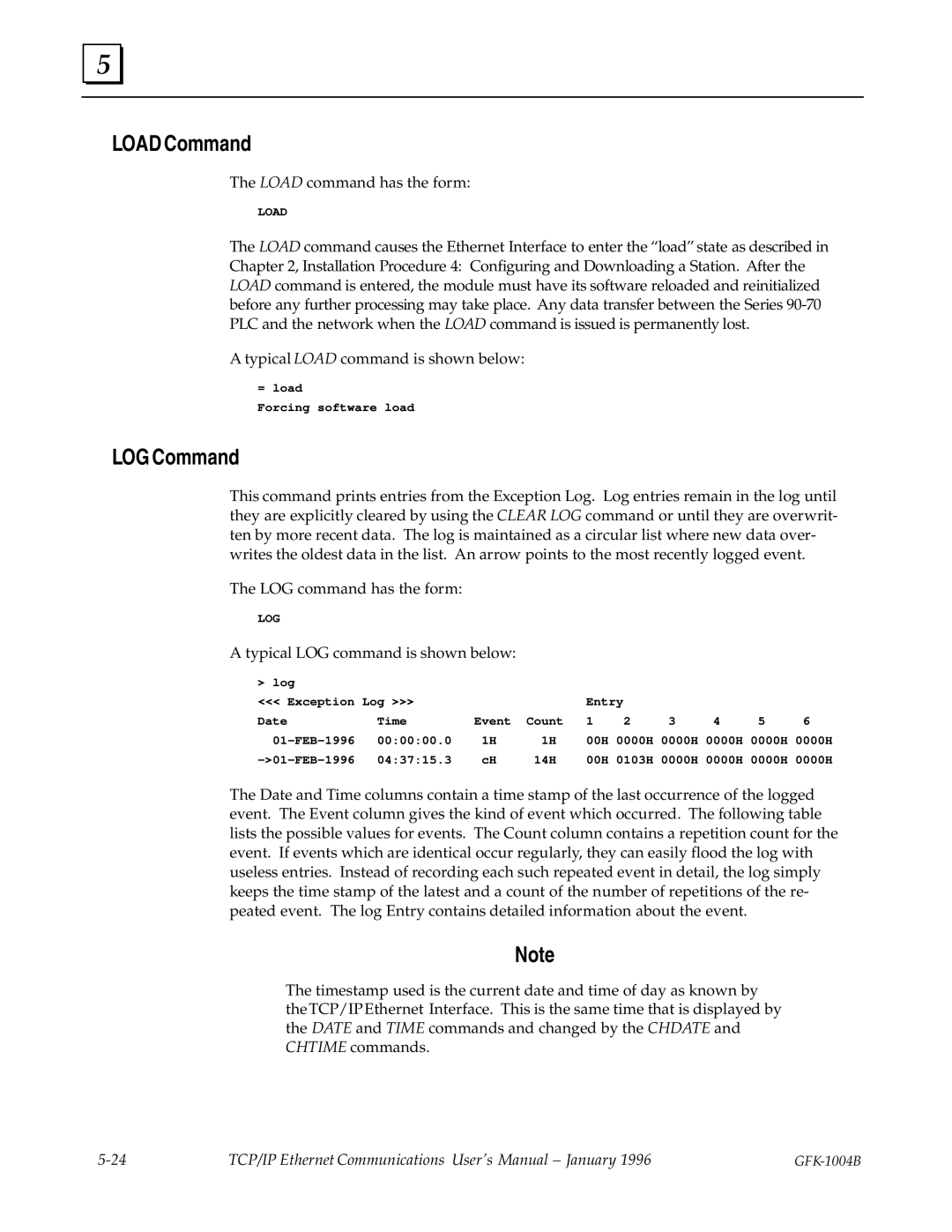5 |
LOAD Command
The LOAD command has the form:
LOAD
The LOAD command causes the Ethernet Interface to enter the ªloadº state as described in Chapter 2, Installation Procedure 4: Configuring and Downloading a Station. After the LOAD command is entered, the module must have its software reloaded and reinitialized before any further processing may take place. Any data transfer between the Series
A typical LOAD command is shown below:
= load
Forcing software load
LOG Command
This command prints entries from the Exception Log. Log entries remain in the log until they are explicitly cleared by using the CLEAR LOG command or until they are overwrit- ten by more recent data. The log is maintained as a circular list where new data over- writes the oldest data in the list. An arrow points to the most recently logged event.
The LOG command has the form:
LOG
A typical LOG command is shown below:
> log |
|
|
|
|
|
|
|
|
|
<<< Exception Log >>> |
|
| Entry |
|
|
|
| ||
Date | Time | Event | Count | 1 | 2 | 3 | 4 | 5 | 6 |
00:00:00.0 | 1H | 1H | 00H | 0000H | 0000H | 0000H | 0000H | 0000H | |
04:37:15.3 | cH | 14H | 00H | 0103H | 0000H | 0000H | 0000H | 0000H | |
The Date and Time columns contain a time stamp of the last occurrence of the logged event. The Event column gives the kind of event which occurred. The following table lists the possible values for events. The Count column contains a repetition count for the event. If events which are identical occur regularly, they can easily flood the log with useless entries. Instead of recording each such repeated event in detail, the log simply keeps the time stamp of the latest and a count of the number of repetitions of the re- peated event. The log Entry contains detailed information about the event.
Note
The timestamp used is the current date and time of day as known by theTCP/IPEthernet Interface. This is the same time that is displayed by the DATE and TIME commands and changed by the CHDATE and CHTIME commands.
TCP/IP Ethernet Communications User's Manual ± January 1996 |
|
